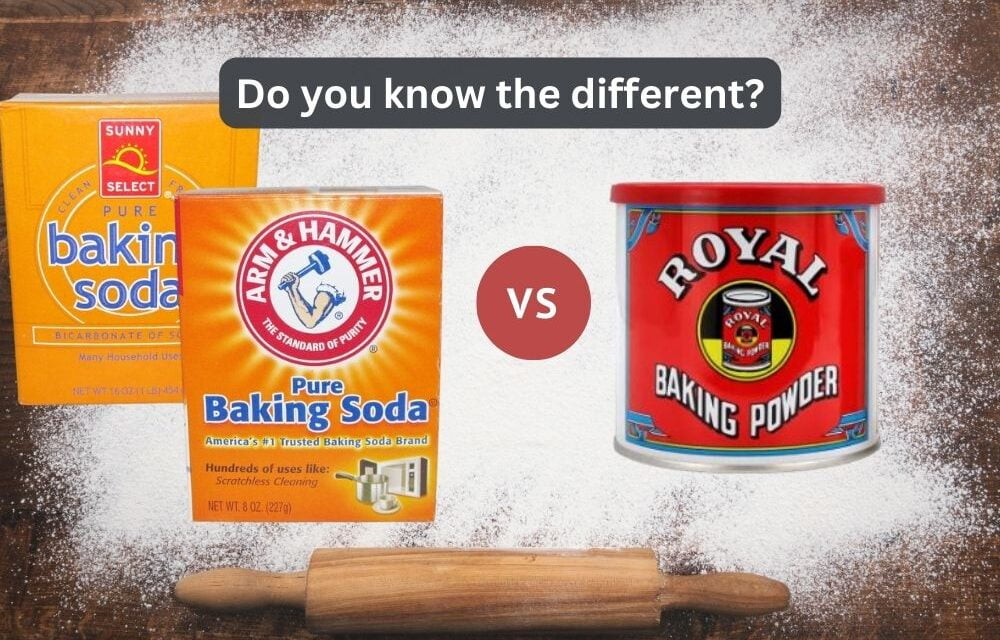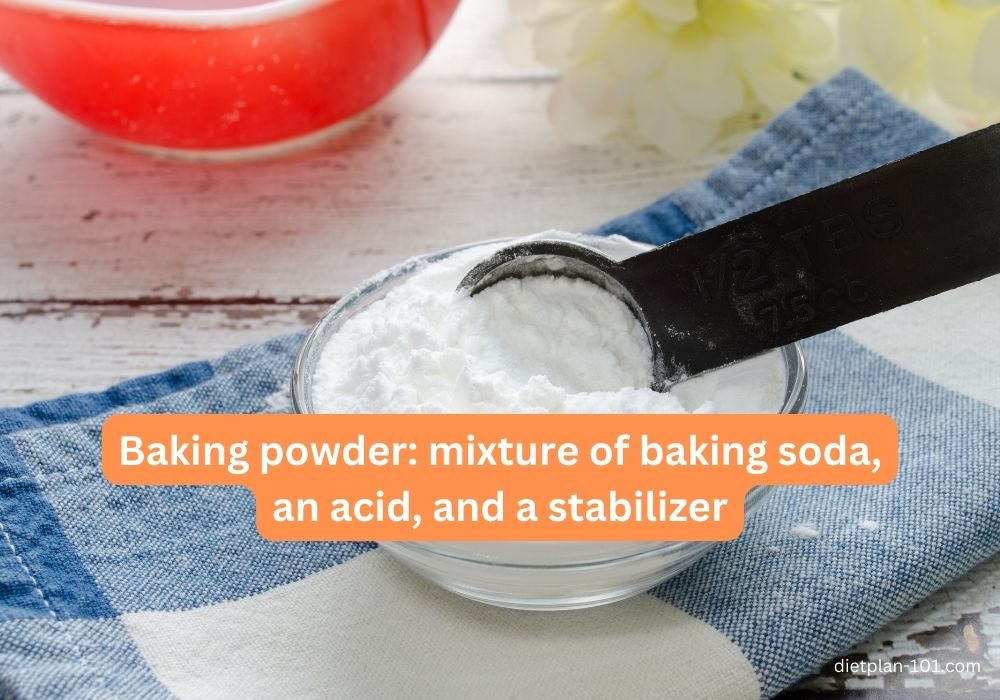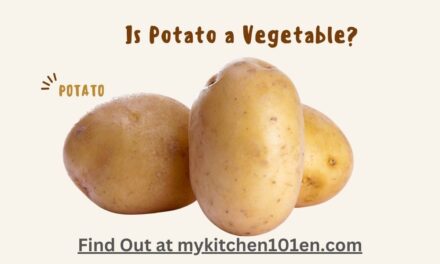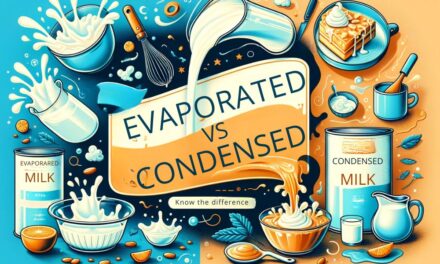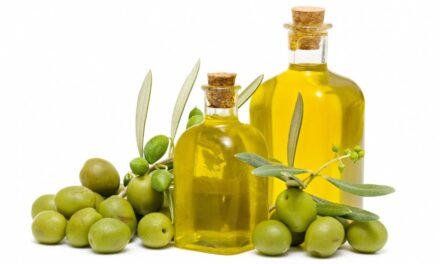Baking soda vs baking powder: Aren’t they the same thing? Absolutely not. Sure, they both play a key role in helping your baked goods rise, but you can’t just swap one for the other and expect things to turn out okay.
Baking soda is a base or a single ingredient and it needs an acid (like lemon juice or buttermilk) to activate and create carbon dioxide (CO2) gas. This is the gas that makes your cookies and cakes rise.
Baking powder, on the other hand, already contains both an acid and a base, which is baking soda, so it doesn’t need any extra ingredients (except water) to work its magic.
So, if you’re whipping up a batch of chocolate chip cookies and your recipe calls for baking soda, don’t think about trying to substitute baking powder. Most of the time, it just won’t work. Stick to the original recipe, unless you are a regular baker and know what you are doing.
What is baking soda?
Sodium bicarbonate, also known as baking soda, is a chemical compound with the formula NaHCO₃. It is a white, crystalline powder that is commonly used as a leavening agent in baking.
When baking soda is mixed with an acidic substance, such as vinegar or lemon juice, carbon dioxide gas is released and this makes baked goods rise. Bear in mind that you shouldn’t use baking soda more than what is required because of its potent, bitter flavor. It is usually incorporated into recipes that include acidic ingredients like buttermilk, sour cream, citrus fruits, coffee, etc.
When using baking soda in a recipe, it is important to use the correct amount. Baked goods can taste bitter and have a soapy texture if too much baking soda is used in the recipe.
Common uses for baking soda include:
We talked about how baking soda helps in baking, but there are many other uses for it.
- Deodorizing: Baking soda is great at neutralizing odors, making it a popular choice for deodorizing everything from refrigerators to shoes.
- Cleaning: Baking soda is a gentle abrasive that can help remove stains from surfaces around your home.
- Personal care: Baking soda can be used as a natural deodorant, toothpaste, and even a facial scrub.
- Cooking: Baking soda can be used to tenderize meat. You can also add a pinch of baking soda to tomato-based sauces to reduce their acidity.
- First Aid: Baking soda can be used to soothe minor burns and insect bites. Mix it with water to create a paste and apply it to the affected area for relief.
What is baking powder?
Baking powder is also a leavening agent, but it is a mixture of baking soda, an acid, and a stabilizer, usually cornstarch. The acid component in baking powder is usually cream of tartar. Baking powder is used in recipes that DO NOT contain acidic ingredients.
Baking powder is available in two types: single-acting and double-acting. Single-acting baking powder reacts with liquid and produces carbon dioxide gas immediately, so it should be used as soon as possible after mixing the ingredients. Double-acting baking powder reacts with liquid and heat, so it releases some gas when mixed with liquid and then more gas when exposed to heat during baking.
Double-acting baking powder vs. single-acting baking powder
Let’s start with single-acting baking powder. As the name suggests, it only reacts once, when it comes into contact with liquid. Single-acting baking powder is typically used in recipes that are baked immediately after mixing the ingredients. Single-acting baking powder can make your baked goods rise quickly, but the downside is that it loses its strength pretty quickly too.
On the other hand, double-acting baking powder reacts twice: once when it comes into contact with liquid and again when it’s heated in the oven. Double-acting baking powder is the go-to for most recipes; it gives your baked goods a more consistent rise and a better texture.
In summary, single-acting baking powder is best for recipes that are baked immediately. Double-acting baking powder is the choice for recipes that require time for rest, rise, and proof. From my personal experience, if your batter is used immediately after mixing, choose single-acting, the leavening strength is better than double-acting.
Baking soda is like a diva; you only need a little bit of it to make a big impact.
What Are the Differences Between Baking Soda and Baking Powder?
Baking soda needs an acidic ingredient to react and release carbon dioxide gas, while baking powder already has an acidic ingredient and can be used in recipes that don’t have acidic ingredients.
Another difference is that baking soda is a single-ingredient product, while baking powder is a mixture of several ingredients, including baking soda, an acid, and a stabilizer.
Baking soda is also more powerful than baking powder, so it should be used in smaller quantities. In general, one teaspoon of baking soda is equivalent to three to four teaspoons of baking powder, depending on the brand of the baking powder. It is crucial to accurately measure ingredients and follow the recipe’s instructions when using baking soda. It is best to have a set of standard measuring spoons if you bake often.
When to Use Baking Soda or Baking Powder
Baking soda is most effective in recipes that contain acidic ingredients like buttermilk, sour cream or citrus fruits. It’s also used to leaven quick bread and pancakes—and sometimes cookies too!
Baking powder is best used in recipes that do not contain acidic ingredients. It’s commonly used to make cakes, muffins and other baked goods where the main ingredient isn’t acidic.
It’s important to note that baking soda and baking powder are not interchangeable. Using the wrong leavening agent can result in baked goods that do not rise properly or have an off taste or texture.
So, when do you use baking soda, and when do you use baking powder?
Well, it’s pretty simple. Use baking soda in recipes with acidic ingredients, like citrus fruit, coffee, cocoa powder, buttermilk yogurt, or sour cream. Use baking powder in recipes without acidic ingredients, like most pancakes, cakes, or muffins (without fruit). Don’t mix them up, or your baking dreams will crumble faster than a cheap cookie.
What happens when you use too much baking powder or baking soda?
When using a leavening agent in a recipe, it is important to use the correct amount. Too much leavening can cause baked goods to rise too quickly and then collapse, resulting in a dense and flat texture. On the other hand, too little can result in baked goods that are too dense and do not rise properly.
Often, too much either baking powder or baking soda can cause baked goods to taste bitter and have a soapy texture or metallic aftertaste. This is especially true for baking soda; remember, baking soda is 3–4 times stronger than baking powder. Just don’t go overboard when using either of them.
The bottom line
In conclusion, baking soda and baking powder are two leavening agents with different personalities. Use them wisely, and your baked goods will rise to the occasion. But be careful not to overdo it, don’t mix them up, or you’ll end up with a baking disaster. Feel free to leave a comment below if you have any questions. Happy baking!

